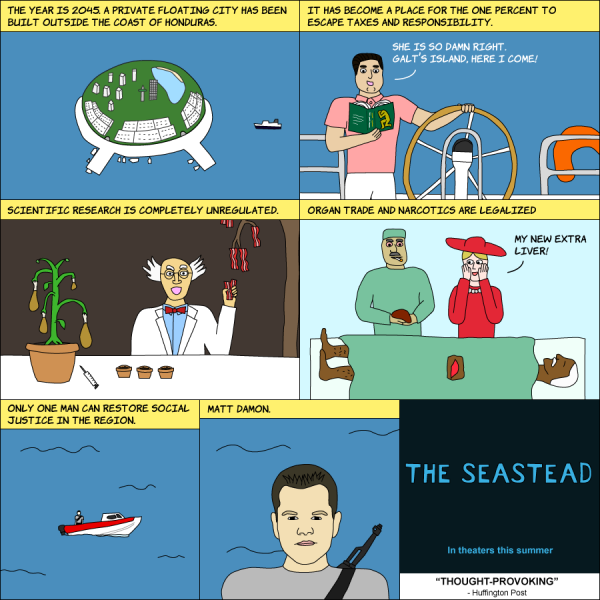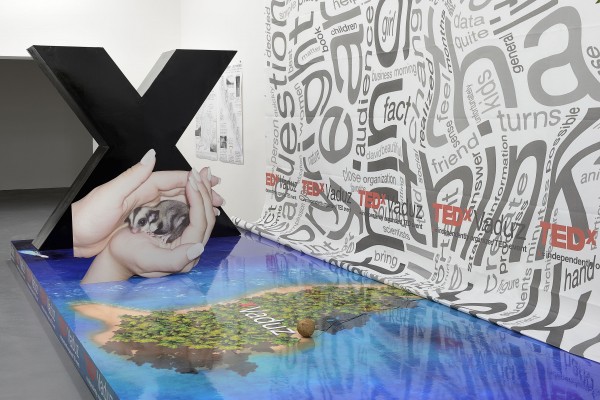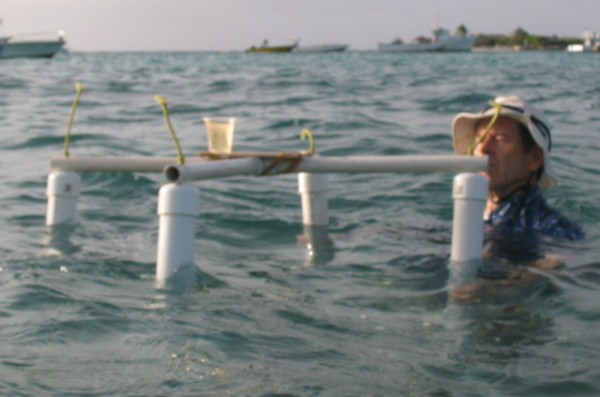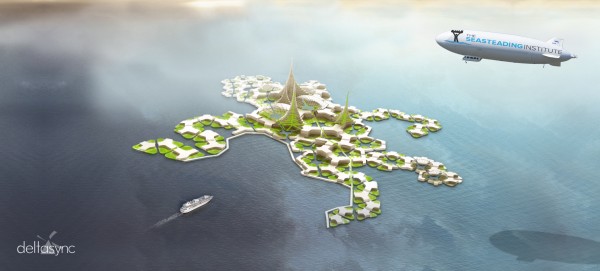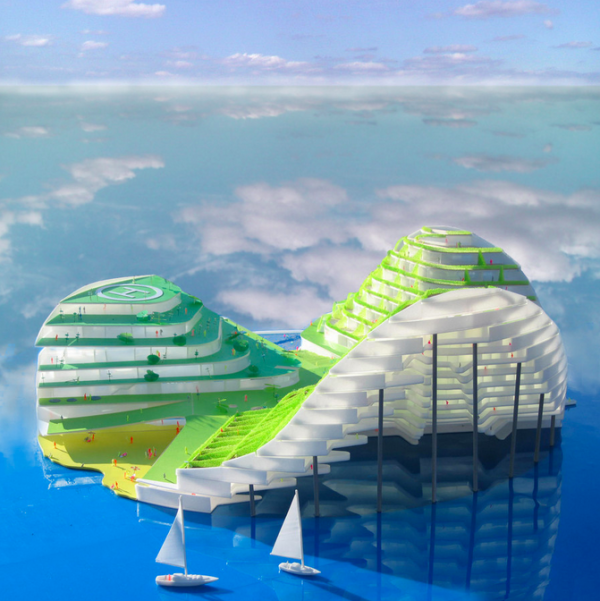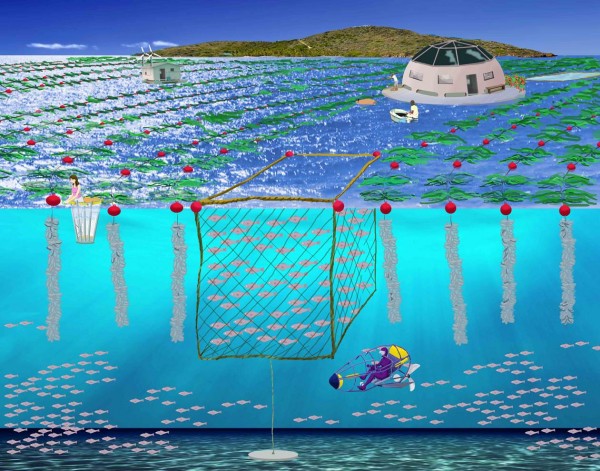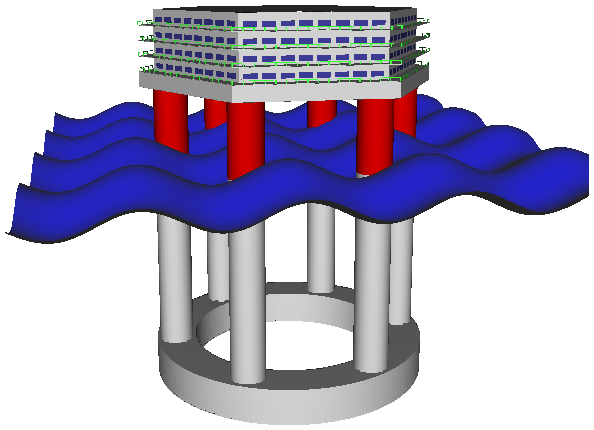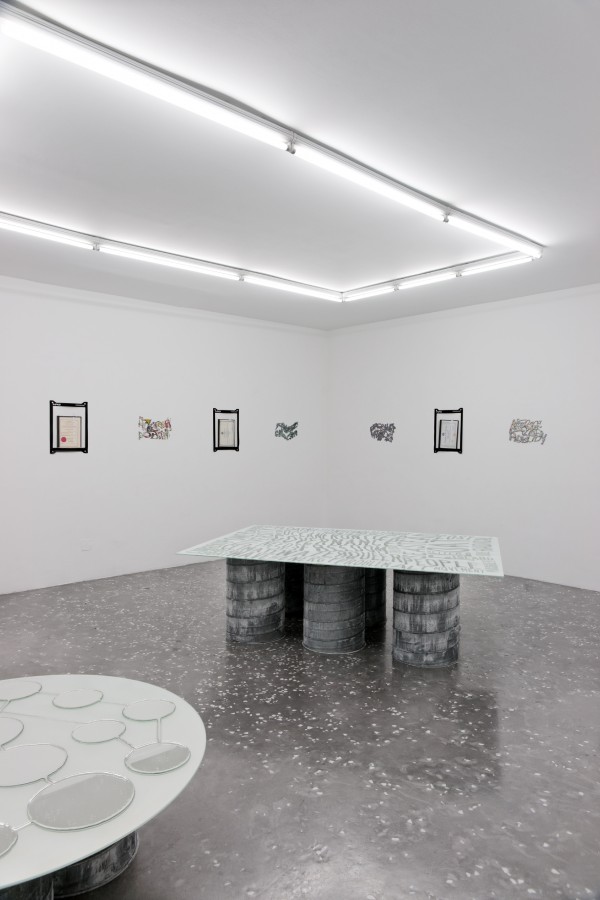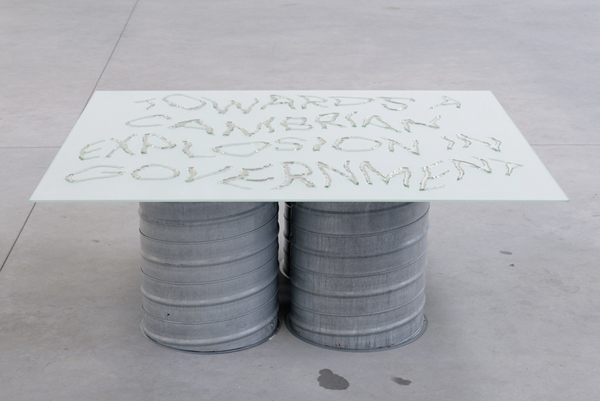What is Seasteading?
Keywords: Blueseed, coast, dan keller, ecology, experimental society, ocean, Patri Friedman, Peter Thiel, Sam Bhagwat, sea gypsies, seasteader, seasteading, Seasteading Institute, steampunk, technocapitalist, water, Wayne Gramlich
A discussion on the neoliberal fantasy of homesteading on the sea.
What is Seasteading?
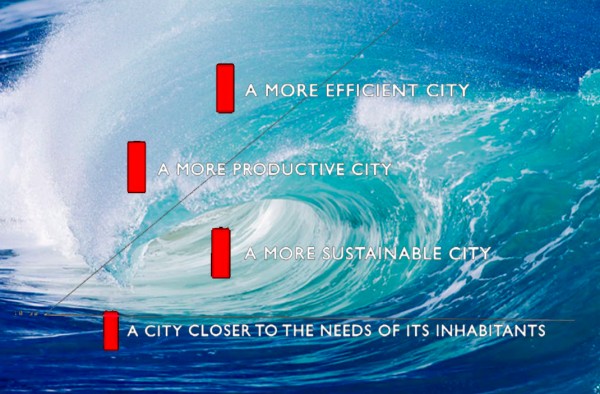
disaster issue Alessandro Bava, architect and Renaissance man Martti Kalliala, and artist Daniel Keller discuss #seasteading and Tech-Secessionism.
The Seasteading argument:
1. We need a better legal system in order to increase freedom and efficiency.
2. The best way to find a better system is through diverse experimentation and competition.
3. One needs a location to make an experimental society.
4. All land is claimed by governments who won’t give up their land, yet 70% of the earth is covered by oceans.
6. In order to make experimental societies we must build competing floating city-states on the ocean.
Daniel Keller: Seasteading is a portmanteau of Sea and homesteading. It is the concept of building semi-permanent cities at sea, usually in international waters and armed with novel socioeconomic and legal systems. It’s sold as the optimal libertarian solution to the lack of innovation in government. Yet its essentially a fantasy escape plan for a permanent minority to circumvent a representative democracy, which is inherently unsympathetic to their devotion to tax evasion and secession.
Libertarians argue that the Federal government should consider itself a ‘public option’ provider of “citizen experience” in the governance industry, and open the market to competing options. Obviously no national government is going to let this happen within their borders, so the idea is that they might, for some reason, just go ahead and tolerate it as long as it takes place in international waters. So a seastead is seen as the only way to lower the barriers of entry to the “governance industry” which are insurmountably high in any sovereign (land-based) nation. These platforms would ideally be built modularly so that citizens or groups could merge and split off to form new seasteads in the constant search for their optimum-blend society. (Islands having sex with other islands, then divorcing them).
Alessandro Bava: Since the 15th century, understanding the legal and political status of the sea has been a struggle. Political philosophers like Hugo Grotius and Carl Schmitt have produced, in very different times, theories to define the immense and fluctuating body of water in terms of power relations. The renewed interest in seasteading seems to reignite that struggle by trying to inhabit the voids left by contemporary regulations on the sea, in times of global political instability. Do you think the seasteading option is a form of new colonialism, and in a way interprets current frustration with traditional governance models?
Martti Kalliala: I don’t think the colonial lens necessarily sets a meaningful frame in which to understand seasteading – even though you could say it’s rooted in a narrative sequence beginning with Manifest Destiny (then hitting the Pacific Wall, and reopening the idea of the frontier via a literal application of Blue Ocean Strategy).
But yes, frustration and anxiety for sure re: broken governance systems that have been experienced across the political spectrum. There’s a whole lot to be said about the current, and to a certain degree generational, disposition towards “exit over voice.” The tendency to favor opting-out over staying in, to create new structures rather than improve what already exists, to build a startup instead of a tracked career in existing organizations – or to start a new country. Exitcore might then be the aesthetic limit of utopia.
DK: I agree that the narrative basis of seasteading could be seen as a literal extension of Manifest Destiny off of the California coast and into the Pacific and beyond. But as opposed to classic forms of colonialism there aren’t any people out there being directly displaced or subjugated—seasteading has all the excitement and potential of a frontier without the humanitarian guilt. When I asked Peter Thiel about his interest in seasteading at the DLD conference a few years ago he framed it exclusively as fulfilling an emotional need for new exploitable frontiers as a catalyst for innovation and economic growth—first the oceans and then space.
DK: A lot has already been written about the emerging ‘scramble for the North’. The Nordic countries, Canada, Russia and the USA are all jockeying for resources and access trade routes in the soon-to-be ice-free Arctic Ocean. In fact a lot of potential geopolitical hotspots involve access to the sea, most notably Russia’s annexation of Crimea which was primarily about maintaining control of its only southern naval base and access to the Black Sea or the dispute over the resources around the Spratly Islands in the S. China Sea which threaten to escalate into a regional war.
Moreover, it’s a common belief that wars over access to freshwater will be the 21st century equivalent of wars over oil. So one way or another wars this century will be fought on or for water.
AB: Is it untimely that such interest in the sea is “territorial” even in times when the biggest industries are non-territorial (i.e finance)?
MK: But the body is still territorial. And the banality and awkwardness of needing to deposit one’s physical body somewhere to be “free” is really fascinating: one would choose this total unfreedom and hardship that comes with living on an isolated platform in a corrosive, at times hostile ocean environment in exchange for a set of abstract, mainly negative freedoms. Culturally it’s a bizarre combination of settler machismo – battling the challenges of the life aquatic – and an almost autistic disregard for one’s physical environment – like whatever as long as there is soylent, hi-speed internet and a lax tax code.
DK: I think it’s a misconception that we’ve moved beyond the territorial. I think its similar to fantasies of the internet as immaterial when in fact it is an enormous, lumbering stack of physical infrastructure. This is also why I think people were so shocked by Russia’s territorial expansion into Ukraine— fighting for territory felt so retro. But even finance is super-territorial (not non-territorial). Enormous profits are derived from exploiting the differing ‘energy states’ between jurisdictions, through tax avoidance schemes like “the double irish” or the “dutch sandwich”, sort of comparable to a steam engine generating energy from thermal gradients. If the world was really post-territorial, this would no longer be possible. A uniform and post-territorial world would be akin to a state of maximum entropy.
AB: Martti how do you think seasteading is relevant in architecture, or rather how is architecture relevant to seasteading?!
MK: It’s pretty obvious how existing and historical architectural typologies of living and working could be applied in more intelligent and interesting ways compared to these naval engineer / archi-hobbyist designs that now circulate online.
More interesting is the fact that designing a seastead would mean collapsing spatial concepts such as country, city, neighborhood, territory, site and building into basically one architectural gesture. Or, at the other end of the spectrum, in a design where secession is possible down to the scale of an individual building or cell – a seastead as a kind of plankton raft of floating mini-steads – these concepts become almost meaningless.
AB: Daniel how has your interest in seasteading translated into your art practice. In general what’s the relationship between your research and your art-making?
DK: It’s always a bit difficult for me to translate my interest in something into an exhibition format intended for art world audiences (without veering into didactic illustration on the one hand or obscurant poetics on the other). But of course on an allegoric and visual level seasteading is so incredibly rich with potential that I think it is worth trying. In my exhibition ‘Lazy Ocean Drift’ last year at New Galerie in Paris (which was my first solo show post aids-3d) I tried to introduce a constellation of ideas around seasteading, offshore finance, labor automation, and ecological disaster in the form of sculpture, sound, installation and video.
I am working on a proposal for a follow-up exhibition in an institution in Germany where I will transform the space into a sort of site-specific immersive seastead simulator. The centerpiece of the proposal is a 7 channel video projection onto the windows of the space, which will display a real-time rendered seascape generated in a video game engine.
AB: Theres something beautiful about imagining the sea horizon as the only view from your future window…is that just romantic? Or is it a generational phenomenon that arises from the implication of false ideas of limitlessness in technology, and the actual physical and phenomenological limitation we experience everyday?
MK: If it’s romantic, the ocean-as-image is also culturally (and apparently also biologically) imprinted with a host of associations that have been successfully appropriated by financial capitalism. Just think of concepts such as liquidity, offshore, Blue Ocean Strategy etc. and the imagery they are typically associated with. This is of course something that Daniel has been looking at a lot in his practice.
DK: Yes, I think the appeal of this imagery really boils down to an almost ‘lizardbrain’ attraction to blue and green landscapes. By employing that sort of imagery to illustrate entirely artificial concepts like liquidity, it lends them a sense of naturalistic inevitability. I imagine liquidity ‘looks’ more like cubes on a conveyer belt than a splash of refreshing aquamarine mouthwash.
AB: For me ultimately the idea of seasteading conflicts with the idea of world order, meaning: imagining the coexistence of many tiny floating utopias where you can choose your preferred form of life seems totally nuts. That’s what happened in colonial america…and then the USA happened…
MK: Or you could consider seasteading as being a completely predictable glitch of that very world order – inhabiting its voids as you said earlier. If nature abhors a vacuum then human nature abhors any vacuum of governance. So pretty much every opportunity for jailbreak from so-called Westphalian state space, which is the foundation of our current world order, has been ruthlessly exploited in the form of thousands of extra-state, extra-legal real and virtual spaces covering our globe – from special economic zones to offshore finance to Guantanamo. Seasteading is just a tiny sub-narrative of this rearranging and relayering of sovereign space. In itself I doubt it could pose an existential threat to this so-called world order, but it doesn’t claim to be one.
AD: How do you imagine your island?
MK: I think the neo-Victorian New Atlantis from Neal Stephenson’s Diamond Age mixed with Leon Krier’s Atlantis would offer an attractive USP.
DK: I imagine a real seastead to be an incredibly depressing unabomber style man cave. A barnacle-pocked corroding metal platform, littered with semen-encrusted socks, stockpiled food in filthy barrels and broken algae bioreactors; the water surrounded by floating plastic garbage.
AB: In 2012 I did a project for a seasteding island off the shore of Naples, Italy. The idea was to create a free trade zone in the sea, operated by the Italian government, which would benefit from a new neighborhood. The project was published online on the most read left wing newspaper, La Repubblica, and generated tons of negative responses… Why do you think seasteading has so many enemies?
MK: I’d presume it’s as unattractive as most libertarian ideas in general to the vast majority of people. That’s also part of the libertarian argument for it: people with a natural disposition for libertarian ideas will always remain a minority, hence a libertarian government can never get into power through the democratic process, hence seasteading.
In any case, funny that you mention the hostility towards your project as I just last week had the opposite experience. In 2008 I produced a rather well researched but completely preposterous project to construct an artificial island – a kind of SEZ-meets-TAZ “social laboratory” – in the Baltic Sea between Helsinki and Tallinn by using the excavated rock material of a potential railway tunnel dug between the two cities. I just got mail from the mayor’s office in Helsinki requesting the drawings as they would like to bring the idea back into discussion. Now I’m not sure if this is a good idea…
DK: Yeah there is a huge disconnect between the idea of seasteading as a platform for experimenting with various forms of governance and the reality that the vast majority of people interested in pursuing it are orthodox libertarians who see some kind of anarcho capitalist libertarianism as the inevitable winner in a ‘fair fight’ between political systems. I really think that a belief in libertarianism is linked to a distinctive and relatively rare neurological type, and therefore will never convince the vast majority of people who tend towards a more altruistic and collectivized morality.
AB: Martti recently you have rewritten Rem Koolhaas’ text ‘City of the Captive Globe,’ readapting it for seasteading, could you explain that connection?
MK: So the original text was an early hypothesis of the ‘theory of Manhattan’ written before Koolhaas’s seminal book Delirious New York. In it he abstracts Manhattan into its essential parts: a gridded archipelago in which each “science and mania” has its own plot. On each plot you have a base (platform) on top of which each philosophy can construct its own edifice, suspend unwelcome laws, facilitate speculative activity, etc. Here 1920’s Manhattan works as an ideological laboratory and an incubator of the world itself (the actual office and condo-filled Manhattan obviously failed to deliver on this hypothesis). Today of course the incubator is a startup incubator and the grid is the smooth unobstructed space of the ocean. So suddenly the text becomes the subconscious theory of seasteading…
While I understand the relative pragmatism of the Seasteading Institute – looking into solving the fundamental hard problems of settling in an ocean environment – which I’m sure is necessary for them to gain any mainstream acceptance, the potential of the seasteading imaginary is to a degree wasted on trying too hard to ‘make sense’ of it. It will probably never ‘make sense,’ and it shouldn’t. For it to be truly attractive I believe it ought to be explicitly charged with libido, excess, and insanity – essentially the unfulfilled promise of ‘Manhattanism’ as a kind of boiling aquaculture. So instead of the lock-in of the grid, a liquid substrate on which islands can copulate and produce mutant offspring, collapse, burn and rise again. And, why not resurrect seapunk as some kind of aesthetic practice of every day life?
On December 11, Martti Kalliala is organizing a symposium in NYC about Seasteading, including new work by Daniel Keller:
ExitCon – a Symposium on the Formal Imaginary of Tech-Secessionism
Van Alen Institute
30 W. 22nd St
New York, NY







